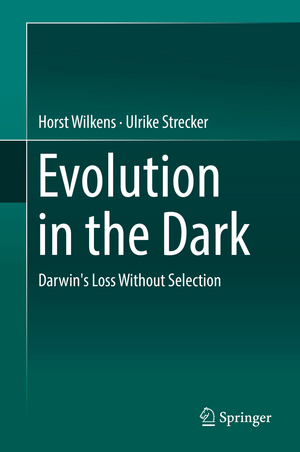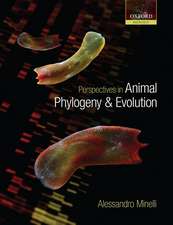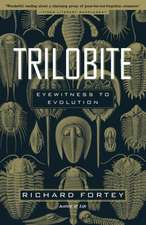Evolution in the Dark: Darwin's Loss Without Selection
Autor Horst Wilkens, Ulrike Streckeren Limba Engleză Hardback – 6 iun 2017
Biologically functionless traits show high variability, which results from neutral deleterious mutations no longer being eliminated by natural selection, which normally acts to preserve functional capability. These negative mutations accumulate until the traits they are responsible for become rudimentary or even lost.
The random genetic basis of regressive evolution is in accordance with Nei’s Neutral Theory of Molecular Evolution, which applies to the molecular level. Such processes are particularly conspicuous in species living in constant darkness, where, for example in Astyanax, all traits depending on the exposure to light, like eyes, pigmentation, visually triggered aggressive behaviour, negative phototaxis, and several peripheral outcomes of circadian rhythmicity, are useless and diminish. In compensation constructive traits like taste, olfaction or the lateral line senses are improved by selection and do not show variability. Regressive and constructive traits inherit independently, proving that the rudimentation process is not driven by pleiotropic linkage between them. All these traits are subject to mosaic evolution and exhibit unproportional epistatic gene effects, which play an important role in evolutionary adaptation and improvement.
Offering valuable evolutionary insights and supplemented by a wealth of illustrations, this book will appeal to evolutionary and developmental biologists alike.
Preț: 948.29 lei
Preț vechi: 1156.45 lei
-18% Nou
Puncte Express: 1422
Preț estimativ în valută:
181.46€ • 189.84$ • 150.74£
181.46€ • 189.84$ • 150.74£
Carte disponibilă
Livrare economică 12-26 martie
Preluare comenzi: 021 569.72.76
Specificații
ISBN-13: 9783662545102
ISBN-10: 3662545101
Pagini: 217
Ilustrații: IX, 217 p. 107 illus., 59 illus. in color.
Dimensiuni: 155 x 235 mm
Greutate: 0.53 kg
Ediția:1st ed. 2017
Editura: Springer Berlin, Heidelberg
Colecția Springer
Locul publicării:Berlin, Heidelberg, Germany
ISBN-10: 3662545101
Pagini: 217
Ilustrații: IX, 217 p. 107 illus., 59 illus. in color.
Dimensiuni: 155 x 235 mm
Greutate: 0.53 kg
Ediția:1st ed. 2017
Editura: Springer Berlin, Heidelberg
Colecția Springer
Locul publicării:Berlin, Heidelberg, Germany
Cuprins
Evolution in the dark – introduction.- The role of rudimentation in evolution.- Diversity and phylogenetic age of cave species.- Surface and cave populations of Mexican Astyanax.- Complexity of interrelationship of cave and surface fish.- Regressive and constructive traits in Astyanax surface and cave fish.- Mechanisms of regressive evolution.
Recenzii
“Anyone who works on any aspect of the biology of this species will need to read this book from cover to cover, certainly more than once, and become critically familiar with the very many details of all aspects of the life of this animal. This book is amongst the most important books on subterranean biology ever written and should be essential reading for all interested in life in the dark.” (G. Proudlove, Journal of Fish Biology, Vol. 91 (6), 2017)
Notă biografică
Prof. Dr. Horst Wilkens
Dr. Ulrike Strecker
Centrum für Naturkunde – CeNak – Center of Natural History
Universität Hamburg – Zoologisches Museum
Martin-Luther-King-Platz 3
20146 Hamburg - Germany
e-mails: Wilkens@zoologie.uni-hamburg.de; Strecker@uni-hamburg.de
Centrum für Naturkunde – CeNak – Center of Natural History
Universität Hamburg – Zoologisches Museum
Martin-Luther-King-Platz 3
20146 Hamburg - Germany
e-mails: Wilkens@zoologie.uni-hamburg.de; Strecker@uni-hamburg.de
Textul de pe ultima copertă
This book provides fascinating insights into the development and genetics of evolutionary processes on the basis of animals living in the dark, such as the Astyanax cave fish.
Biologically functionless traits show high variability, which results from neutral deleterious mutations no longer being eliminated by natural selection, which normally acts to preserve functional capability. These negative mutations accumulate until the traits they are responsible for become rudimentary or even lost.
The random genetic basis of regressive evolution is in accordance with Nei’s Neutral Theory of Molecular Evolution, which applies to the molecular level. Such processes are particularly conspicuous in species living in constant darkness, where, for example in Astyanax, all traits depending on the exposure to light, like eyes, pigmentation, visually triggered aggressive behaviour, negative phototaxis, and several peripheral outcomes of circadian rhythmicity, are useless and diminish. In compensation constructive traits like taste, olfaction or the lateral line senses are improved by selection and do not show variability. Regressive and constructive traits inherit independently, proving that the rudimentation process is not driven by pleiotropic linkage between them. All these traits are subject to mosaic evolution and exhibit unproportional epistatic gene effects, which play an important role in evolutionary adaptation and improvement.
Offering valuable evolutionary insights and supplemented by a wealth of illustrations, this book will appeal to evolutionary and developmental biologists alike.
Biologically functionless traits show high variability, which results from neutral deleterious mutations no longer being eliminated by natural selection, which normally acts to preserve functional capability. These negative mutations accumulate until the traits they are responsible for become rudimentary or even lost.
The random genetic basis of regressive evolution is in accordance with Nei’s Neutral Theory of Molecular Evolution, which applies to the molecular level. Such processes are particularly conspicuous in species living in constant darkness, where, for example in Astyanax, all traits depending on the exposure to light, like eyes, pigmentation, visually triggered aggressive behaviour, negative phototaxis, and several peripheral outcomes of circadian rhythmicity, are useless and diminish. In compensation constructive traits like taste, olfaction or the lateral line senses are improved by selection and do not show variability. Regressive and constructive traits inherit independently, proving that the rudimentation process is not driven by pleiotropic linkage between them. All these traits are subject to mosaic evolution and exhibit unproportional epistatic gene effects, which play an important role in evolutionary adaptation and improvement.
Offering valuable evolutionary insights and supplemented by a wealth of illustrations, this book will appeal to evolutionary and developmental biologists alike.
Caracteristici
Sheds new light on general evolutionary processes
Provides insights into the evolution of cave animals
Richly illustrated throughout
Includes supplementary material: sn.pub/extras
Provides insights into the evolution of cave animals
Richly illustrated throughout
Includes supplementary material: sn.pub/extras
















